#halberd-leaved yellow violet
Text

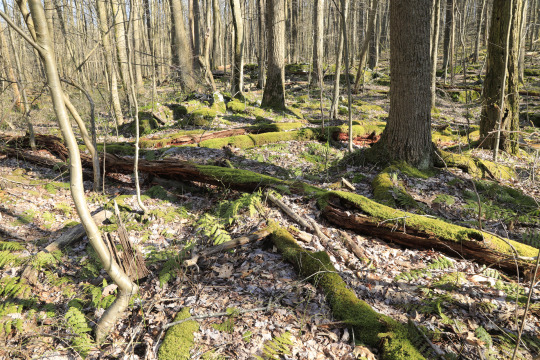
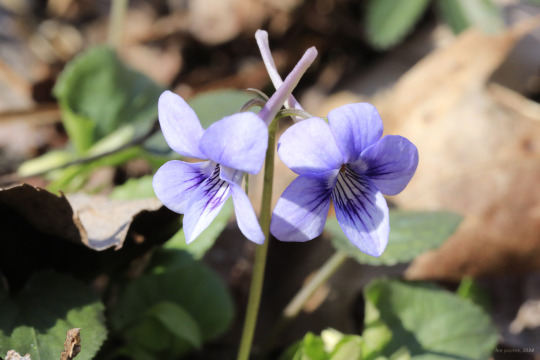
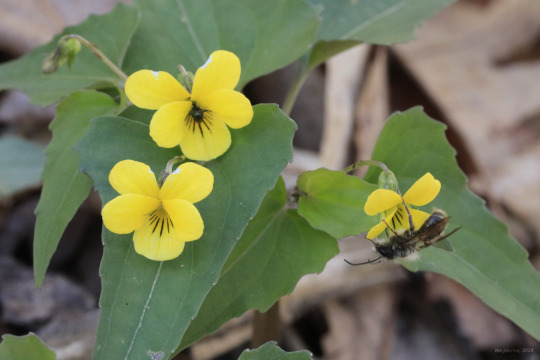
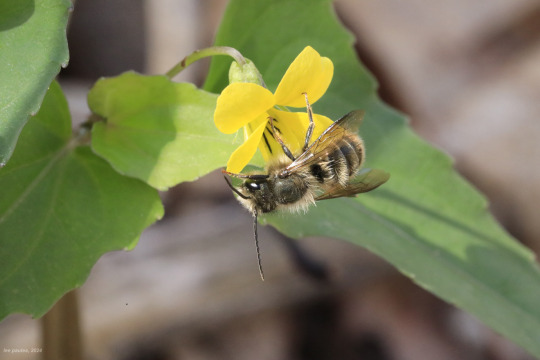

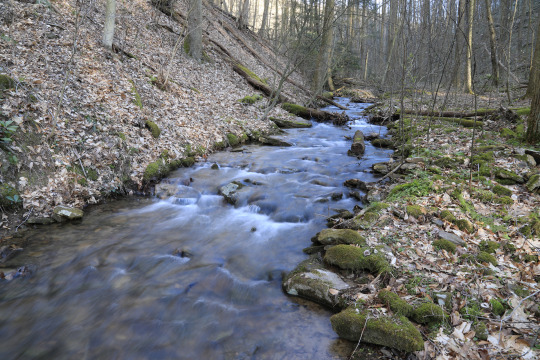
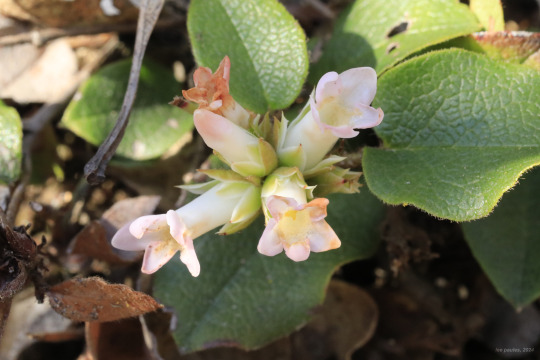
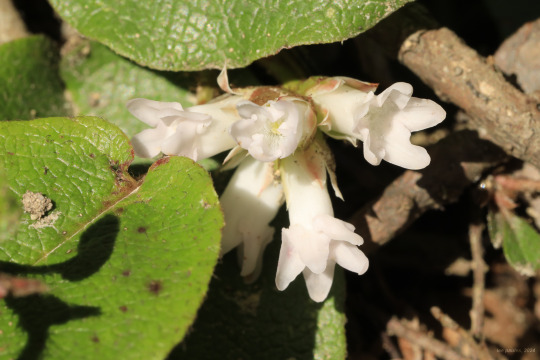
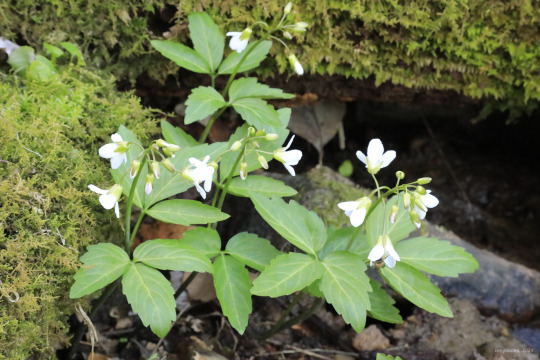
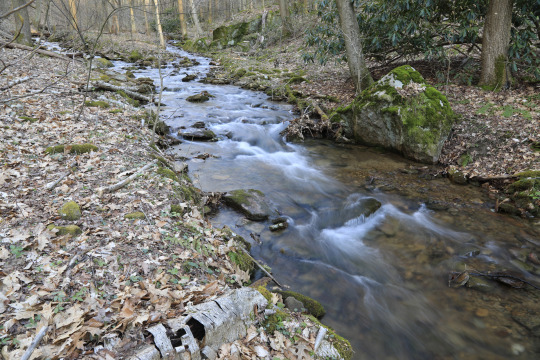
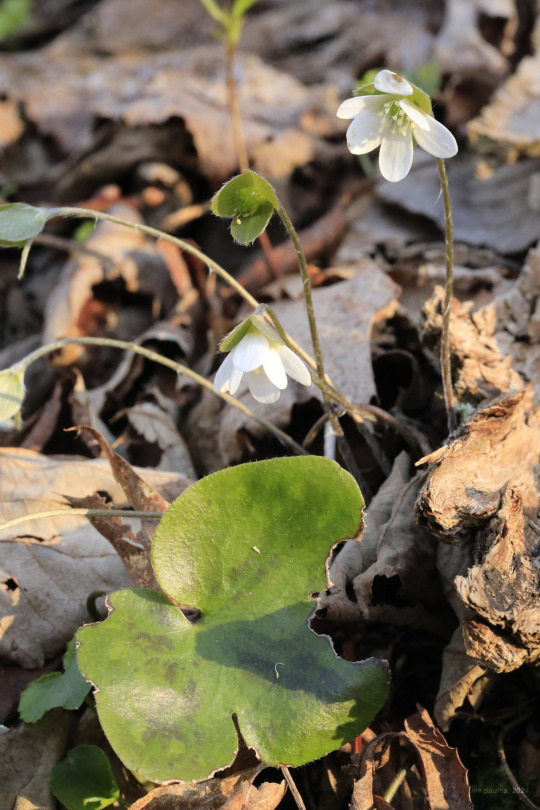
NC-WV is finally enjoying a dry, sunny spring weekend after weeks of near nonstop, flooding rain. That was all the incentive I needed to take my first long hike of the spring at Coopers Rock State Forest. The wildflower progression on top of Chestnut Ridge is running about 2 weeks behind that at lower elevations, but there were plenty of early spring beauties on display this afternoon. From top: Allegheny serviceberry (Amelanchier laevis); long-spurred violet (Viola rostrata); halberd-leaved yellow violet (Viola hastata); downy rattlesnake plantain (Goodyera pubescens); trailing arbutus (Epigaea repens), which is not herbaceous but a mat-forming, evergreen shrub in the health family; broadleaf toothwort (Cardamine diphylla), also known as two-leaf toothwort; and round-lobed hepatica (Hepatica americana), which prefers drier woods than sharp-lobed hepatica (Hepatica acutiloba), which I typically find growing on the rocky, calcareous slopes along the Monongahela River.
#appalachia#vandalia#west virginia#wildflowers#flora#spring#coopers rock state forest#chestnut ridge#allegheny serviceberry#long-spurred violet#halberd-leaved yellow violet#downy rattlesnake plantain#trailing arbutus#broadleaf toothwort#two-leaf toothwort#round-lobed hepatica
86 notes
·
View notes
Text

The Flower Maids, doll-sized prototype androids created by Alice to act as housekeepers and perform maintenance on the hidden chamber where the Rozen Maiden would be kept until someone was deemed worthy to ‘wind’ them up.
Each Flower Maid is color coded and are equipped with different weapons
Red- Hinageshi/Mohn (red poppy)
She wields an axe.
Blue- Sumire/Violett (violet)
She uses a mace
Green- Ajisai/Hortensie (hydrangea)
She wields a halberd
Yellow- Himawari/Sonnenblume (sunflower)
She wields a crossbow
White- Tsubaki/Kamelie (camellia)
She wields a dagger.
The Flower Maids will judge whether someone is ‘worthy’ of waking the Maidens up by asking them one simple question.
“Will you wind or will you not wind?”
All they need to do is answer ‘yes’ or ‘no’. If ‘yes’, the person will be led down into the basement.
If ‘no’, the Maids will leave you alone to explore the Manor. Try to steal anything, though, and they will attack.
Any other response will also prompt an attack.
Once all eight Maidens are activated and have moved out of the old manor, the Maids are programmed to either follow the Maidens and act as their servants or vacate to the N-Field where they will deactivate until someone comes looking for them
6 notes
·
View notes
Photo







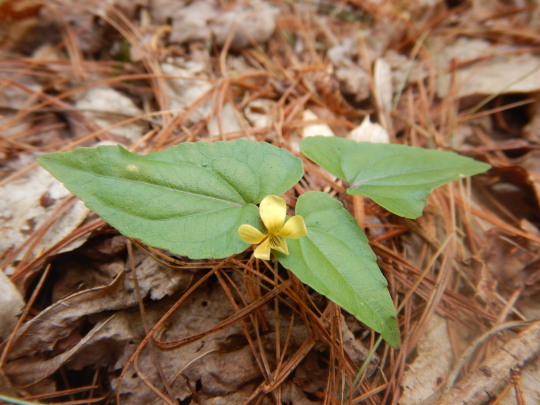


Violaceae pt 2 electric boogaloo. a mix of rrg and other trips from the past weeks.
Some damn yellow composites, wait I meant violets.
All ecological location notes are my own, all descriptive morphological notes are from the Ballard Ohio Link Key.
1,2 Viola pubescence, downy yellow violet.
Richardson preserve, on dry depositional hillside from ancient glacial outwash that’s been partially concreted. Drier section of mesic forest, associated with dry upland calceric forbe layer.
Stems 1(2), erect throughout the growing season; basal leaves 0(–2); cauline leaves clustered in uppermost 1/4 of stem length, broadly ovate to reniform, subcordate to broadly cuneate at base, broadly obtuse to rounded at apex; foliage densely pubescent throughout; stipules broadly ovate; upper surface of leaf blades gray-green
Caulescent perennials from thick rhizome, stems erect, commonly solitary, ≤ 37 cm tall; stems, foliage and peduncles gray-green to green, lower surface of leaf blades often paler, densely hirsute; leaves cauline (rarely 1 basal leaf), clustered in upper 1/4 of stem; stipules free, broadly ovate, entire or weakly erose; leaves spreading, leaf blades undivided, largest ≤ 75 × 80 mm, upper broadly ovate to reniform, lower broadly reniform, base broadly cuneate to rounded or subcordate, margins serrate, ciliate, apex broadly obtuse to rounded; chasmogamous flower ≤ 13 mm; calyx glabrous or hirtellous, eciliate or ciliate; lowest sepals linear-lanceolate to lanceolate (rarely ovate-lanceolate), acute to obtuse; auricles short and entire, not elongating in fruit; corolla wholly yellow with purple-black lines at base of petals and purple-tinged on back of petals; spur short-globose; lateral petals densely bearded with slightly clavate hairs, spurred petal glabrous; cleistogamous flowers produced after chasmogamous; capsule 7–14 mm, green drying tan or brown, unspotted, glabrous or densely tomentose; seeds 2.3–3.0 × 1.3–1.9 mm, medium orange-brown, unspotted; 2n=12.
Since this is the complex species the complex was named after, the map is not up to date nor accurate, this would be the theoretical range of both V. pubescence and members of it’s complex.
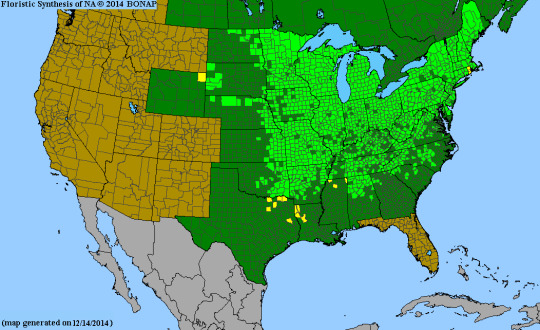
3,4 Viola glaberrima, the northern wedge leaf violet
Found at Gladys Riley Appalachian Golden Star Lily Preserve, Scioto Co. Stand Alone, among talus, individual found appeared to have been trampled by hikers but when lifted was noticeably caulescent and not affixed to the ground nor prostrate. According to maps these are both Appalachian, but seem to have a lot of overlap with the eastern/ northern most range with Golden Star Lily. Appear on same somewhat leeched soils along calcium rich talus slopes. The key here isn’t the margin surface to Identifying the species but the way the base doesn’t form a cordate end at all, like the base of the leaves are angled upward, the leaf it’s self is ciliate and the nectar spur is globular and glabrous. Also clavate means club shaped, look at the lateral petalloid lads on this violet, notice that the hairs are club shaped and not thin white and ciliate.
Leaf blades narrowly ovate, broadest well above the base, base cuneate to broadly rounded; margins conspicuously serrate to the tip; stem, foliage and peduncles glabrous or sparsely to moderately hirtellous with easily visible hairs; north of GA and SC
Caulescent perennials from thick rhizome, stems erect, solitary, ≤ 36 cm tall; stem, foliage and peduncles green, glabrous or sparsely to moderately hirtellous with easily visible hairs; leaves cauline (rarely 1 basal), clustered in upper 1/4 of stems; stipules free, usually strongly erose; leaves spreading, leaf blades undivided, largest ≤ 92 × 90 mm, upper narrowly ovate-lanceolate, middle and lower narrowly ovate-triangular to broadly ovate-lanceolate, broadest well above the base, base cuneate to broadly rounded, margins conspicuously serrate to the tip, eciliate or appressed-ciliate, apex short- to long-acuminate; chasmogamous flower ≤ 14 mm; calyx glabrous or hirtellous along midvein, eciliate or ciliate; lowest sepals lanceolate, acute; auricles short and entire, not elongating in fruit; corolla wholly yellow with purple-black lines at base of petals and purple-tinged on backs of petals; spur short-globose; lateral petals densely bearded with slightly clavate hairs, spurred petal glabrous; cleistogamous flowers produced after chasmogamous; capsule 6–14 mm, green drying brown, unspotted, usually glabrous; seeds 2.7–2.8 × 1.8 mm, tan to light brown, unspotted

5,6 Viola eriocarpa, The smooth ciliate violet (originally part of the V. pubescence complex)
Found along section of open rich forest tertiary ridge where sandstone meets dolomite strata A6 RRG.
Stems mostly 2 to several, usually decumbent at base during chasmogamous flowering, becoming erect in fruit; basal leaves (1)2–5; cauline leaves distributed over much of stem length, ovate, cordate at base, acute to abruptly short-acuminate at apex; foliage glabrous or thinly pubescent on upper stem and leaves; stipules narrowly ovate; upper surface of leaf blades medium green
Caulescent perennials from thick rhizome, stems usually decumbent at base during chasmogamous flowering but becoming erect in fruit, commonly ≥ 2, ≤ 35 cm tall; stems, foliage and peduncles green, glabrous to sparsely (rarely moderately) hirtellous; leaves cauline and basal, basal leaves usually ≥ 2, cauline leaves well distributed along the stem; stipules free, narrowly ovate, entire or weakly erose; leaves ascending to spreading, leaf blades undivided, largest ≤ 64 × 73 mm, upper narrowly ovate to ovate and often short-acuminate, lower ovate to broadly so and acute, base subtruncate to cordate, margins serrate, eciliate or ciliate; chasmogamous flower ≤ 12 mm; calyx glabrous, eciliate or ciliate; lowest sepals linear-lanceolate to lanceolate, acute to obtuse; auricles short and entire, not elongating in fruit; corolla wholly yellow with purple-black lines at base of petals and purple-tinged on backs of petals; spur short-globose; lateral petals densely bearded with slightly clavate hairs, spurred petal glabrous; cleistogamous flowers produced after chasmogamous; capsule 7–13 mm, green drying tan or brown, unspotted, glabrous or densely tomentose; seeds 2.1–2.7 × 1.4–1.7 mm, medium orange-brown, unspotted; 2n=12
Because this species is newer, the issue arises to where we don’t know it’s complete range since most reports were filed under V. pubescence.

7,8 Viola hastata, halberd violet,
Violet was found along highland section, near secondary ridge of muir valley in the section where rich ericaceous sandy loam was present, acidic mesic forest magnolia and lower associated Rhododendron, R. maximum along with open Pinus echinata forest are associated with this section of ridgeline. Violet was unlike the normal variegated colored Viola hastata which made me wonder if it may have been a hybrid; but it wasn’t.
Rhizome whitish; leaf blades hastate, base subcordate to deeply cordate with basal lobes parallel or divergent; upper surface of leaf blades in life frequently bicolorous, silvery-green between the contrasting darker green veins
Caulescent perennials from thick whitish rhizome, stems erect, solitary (very rarely 2), ≤ 30 cm tall; stems, foliage and peduncles pale gray-green, upper surface of leaf blades frequently silvery-green between the constrasting darker green veins, all glabrous or upper leaf blade surface with short appressed hairs; leaves usually cauline only (occasionally with one basal leaf), clustered in upper 1/5 of shoot; stipules free, shallowly incised with 2–5 short processes especially on longer side; leaves spreading, leaf blades undivided, largest ≤ 86 × 58 mm, narrowly or broadly ovate-triangular to hastate, base subcordate to deeply cordate with basal lobes parallel or divergent, margins serrate at widest point, shallowly serrate to subentire distally, eciliate, apex acuminate; chasmogamous flower ≤ 12 mm; calyx glabrous, eciliate; lowest sepals lanceolate, sharply acute; auricles short and entire, not elongating in fruit; corolla wholly yellow with purple-brown tinge on back of petals; spur short-globose, barely exserted beyond auricles; lateral petals densely bearded with slightly clavate hairs, spurred petal glabrous; cleistogamous flowers produced after chasmogamous; capsule 7–9 mm, dark green drying brown, unspotted, glabrous; seeds 2.0–2.5(3.5) × 1.3–1.6(2.0) mm, brown, unspotted; 2n=12.
9,10 Viola spp. ??? eriocarpa hybrid????
Caldwell Nature preserve, had basal leaves, ciliate stems, glaberous leaves, definitely cordate non spreading, caulescent. Looked more like V. eriocarpa than V. rotundiflolia and the habitat would of been off.
KEY :
https://people.ohio.edu/ballardh/vgpena/violakeys.htm
#Viola#violaceae#botany#violets#viola hastata#viola pubescence#viola eriocarpa#viola glaberrima#wildflowers#keys#ecology#evolution
20 notes
·
View notes
Text
Introduction to the World of Jörubos: Part 2- Juld’win

The Kingdom of Juld'win
Located in the Eastern Continent in the North Eastern parts of the Suncrest Plateau is the human Kingdom of Jul’dwin; best known for their architect and agriculture. The Kingdom lies at the edge of an emerald forest of beauty and mystery. Most of the Kingdom; however, is grasslands and open fields making it a thriving ecosystem for farmers.
The land is filled with a large variety of fauna. The most well known is the Prairie stallions who make their home near the middle of Suncrest Plateu. These stallions are the most common mounts in Jörubos. Other herbavorial creatures include the suncrested deer who's antlers are used to make bows and is one of the main food sources for the Kingdom, plateau bovine who are mostly kept as farm animals but some still roam wild, and the Juld'win rams whom are also mostly farm creatures used for milk and cheese. Many birds fly the skies stick in the trees; one of which being the rainbow pheasant whose feathers are used for nobility mask and jewelry. You must beware of the many dangerous creatures who call this land their home. The lands are homes to many packs of grassland dire wolves and territories of the great bears who roam in the forest.

Worn by the royal family and its soldiers; the red and gold and white colors of the Juld'win Coat of Arms has always welcomed its visitors. With the six armed leopis gripping the halberd with a mighty roar shows the bravery and strength of the human Kingdom. The crown it wears upon its head is made of floral design indicating the agricultural side of the human Kingdom.

Currently ruled by King Aldrich Adamson Beasley; who tends to his people and protects the weak and poor. He is a righchious King who has helped his fellow Kingdoms in a time of need for their people. He is also feared in battle. The man has been to many battles as the Kingdom of Juld'win was in a state of civil war between the Western Kingdom and the Eastern Nobility of Hollows Grove. As soon as he stepped on the battlefield; the war was as good as done. He is a master swordsman who can hold his own against a hundred soldiers. For he is also known as the Ursol of Juld'win.
Juld'win's soldiers fight as one on the battlefield. Taking after their king they fight with brutality and cunning skills. Traps and their ferocity are what these men are best known for.

Their archers wear the mask of hawks in battle indicating that they are the best of the best for no soldier leaves the training ground without mastering their work. Human mages are extremely rare; only able to learn light and dark magic. Light mages either become healers and join the churches or Paladins and they join the Sol Crusades.
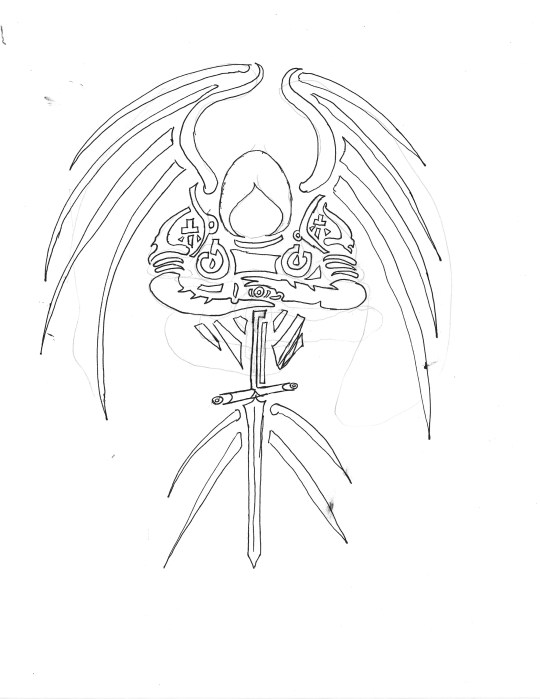
The human religion revolves around the God Lighet; God of light, Agriculture and architecture. It is said that he built the Kingdom up from nothing but stone and his mind. He is believed to be the leader of twelve. Each one of his soldiers represents the spirit of mortals. Nemielle (Hope), Mathias (Fate), Laura (Justice), Pariah (Valor), Tyre (Willpower), Inigo (Courage) and etc. Some say he can take the form of a great Leopis to bolster the strength of his army and people tenfold.
The flora in Juld'win have always been a gem in the world of Jörubos. Many floral plants bloom year round. The spring holds the pink and white flowers that bloom near the town of Excalibrae. But like the town they hold a dark and deadly secret. Winter comes and blooms the sugar plum trees with bright violet flowers in the Emerald Groves. Winter also brings the frost lilies which bloom in the snowy terrain of Moonlit Peaks. Summer brings the orange and yellow daisies of Suncrest plateau which is a delicacy to many of its wildlife and is said to be used for healing ailments. Autumn brings the oranges and browns to the trees and bushes of the Kingdom. Many fruits and vegetables are grown in the farmlands of the Kingdom and traded all over the world.
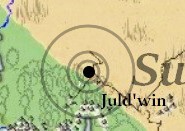
The architecture of the Kingdom is incredible. All made of stone and marble which protects the people who reside inside. The Kingdom has three walls. The first being the farmlands where the poor and farm workers live and make their profit. Fresh rivers flow through with enough river-stone salmon to feed to their families. The second wall is the trade district. All merchants from all over the world enjoy coming here. Full of festivities and culture it is enjoyed by all who walk through its gates. The final wall is the nobility and castle workers and soldiers homes. The castle lies in the middle of it all making it the biggest Kingdom in all of Jörubos.
Finally its hunters guild. Like all the others it comprises of the best hunters in all of Juld'win. With the civil war going on; they have become a safe haven for those who wanted to escape the fighting. They expanded their guild to become a village; welcoming those who seek sanctuary with the Chantry of Lighet as it's center. Priest, nuns and healers from the villages burned by the war help heal the broken bodies and spirits of the refugees.
--------------
The human Kingdom is revealed!!!
I had to take a lot of inspirations for this so it didn’t seem too....real? I guess you could call it. Lighet and his soldiers were heavily inspired by blizzard’s archangel designs. In the future I will probably do something revolving stained glass designs for each of the religions.
The mask design was inspired by: https://www.google.com/url?sa=i&url=https%3A%2F%2Fwww.deviantart.com%2Fwindfalcon%2Fart%2FGold-Spiralwings-Leather-Mask-715428404&psig=AOvVaw0fQx6J9-Q4Jz3pokKKMOoV&ust=1590357695955000&source=images&cd=vfe&ved=0CA0QjhxqFwoTCKCtt9-iy-kCFQAAAAAdAAAAABAD
And omg I am terrible at clothing designs. Good lord was the King’s wardrobe a mess. I literally cropped half of it because it was just awful.
Tomorrow I will reveal the last Kingdom!
Stay tuned
#my world#my book#Project Jörubos#book project#project#Juld'win#King#human culture#coat of arms#Jörubos#holy crap that coat of arms took me an hour to draw
0 notes
Photo
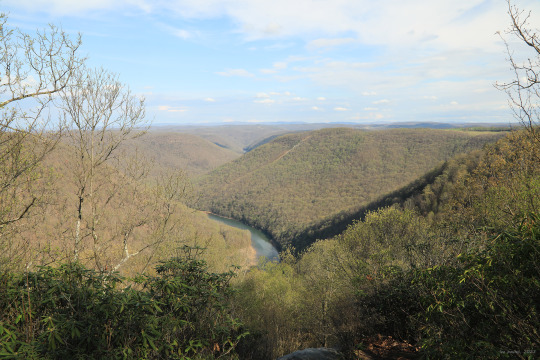

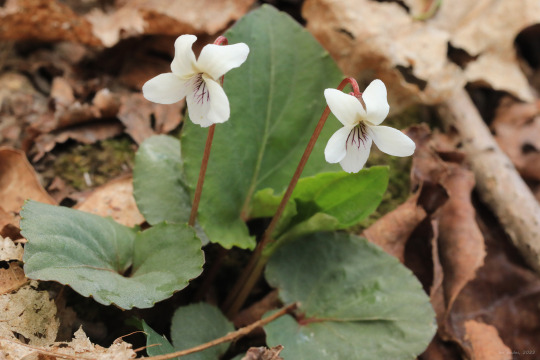





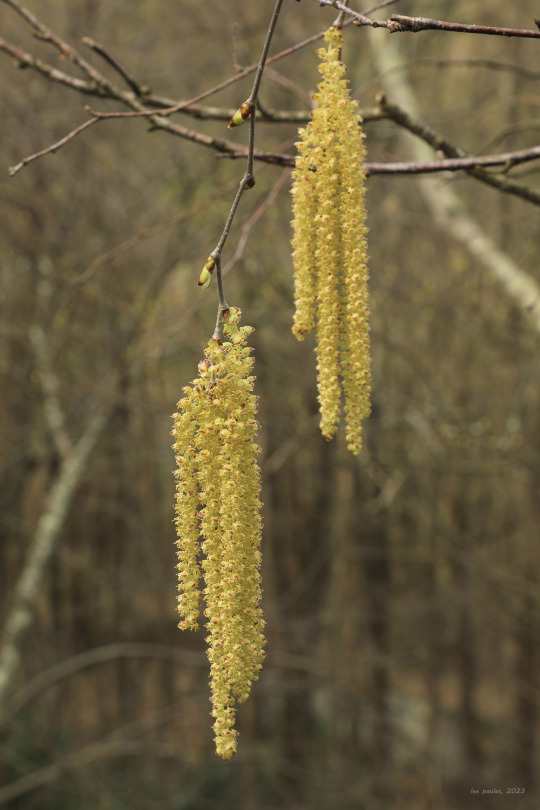
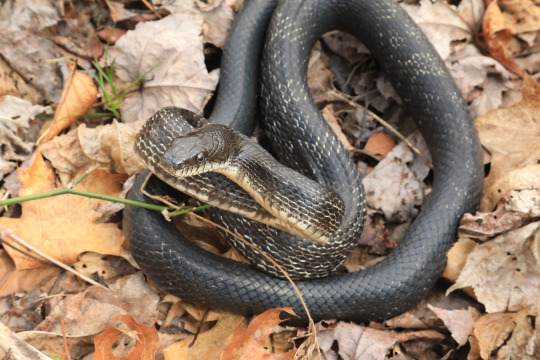
What a gorgeous afternoon for a Mid-April hike in the Cheat River Canyon. Spring’s delicate treasures were out in full force. From top: halberd-leaved yellow violet (Viola hastata); sweet white violet (Viola blanda); broadleaf toothwort (Cardamine diphylla); Carolina spring beauty (Claytonia caroliniana); bloodroot (Sanguinaria canadensis); common blue violet (Viola sororia); Allegheny serviceberry (Amelanchier laevis); sweet birch (Betula lenta) catkins; and a cranky Allegheny rat snake (Pantherophis alleghaniensis) newly out of hibernation.
#appalachia#vandalia#west virginia#cheat river#cheat river canyon#chestnut ridge#snake hill wildlife management area#spring#april#wildflowers#reptile#snake#allegheny rat snake#eastern rat snake#halberd-leaved yellow violet#sweet white violet#broadleaf toothwort#two-leaf toothwort#crinkleroot#carolina spring beauty#bloodroot#common blue violet#allegheny serviceberry#sweet birch#black birch
123 notes
·
View notes
Photo
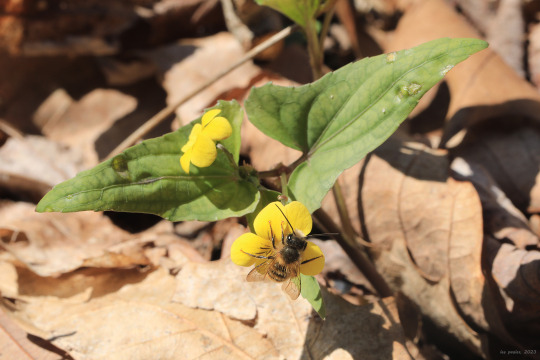
A young spring honey bee clings to another new arrival - a halberd-leaved yellow violet (Viola hastata) - at Coopers Rock State Forest.
#appalachia#vandalia#west virginia#spring#early april#coopers rock state forest#wildflowers#viola hastata#halberd-leaved yellow violet#insect#bee#honey bee
105 notes
·
View notes
Photo



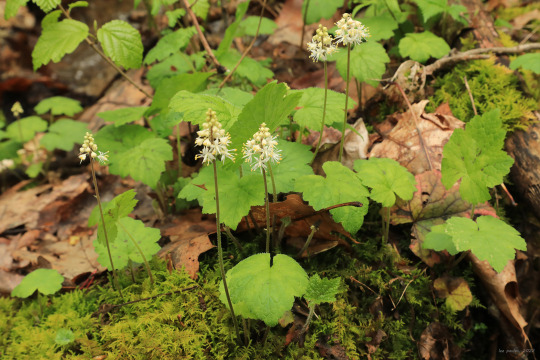

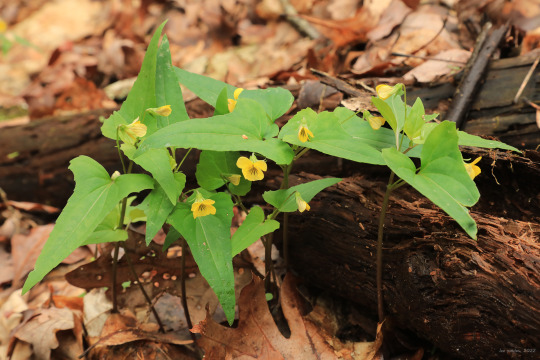
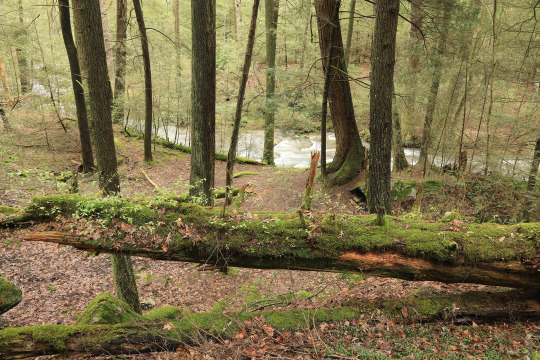

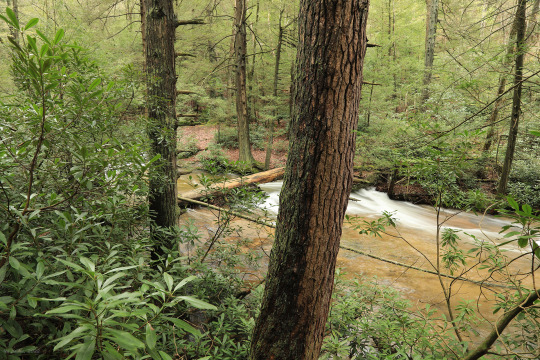

Eastern hemlock (Tsuga Canadensis) is sometimes referred to as the “redwood of the east”, and once-upon-a-time, this was absolutely the case; great expanses of virgin hemlock forest cooled headwater streams and created their own unique ecology. But these old growth forests are largely gone now, with only a few remnant stands scattered along the Appalachian spine. A spring hike through a pristine stand of these gentle giants is an experience to be treasured, providing a rare connection to a primeval world nearly lost to us.
From top: Painted trillium (Trillium undulatum), a lover of old hemlock and spruce forests and the most beautiful and delicate of all the trilliums to bloom in this area; marsh blue violet (Viola cucullata), a moisture-loving violet with club-like hairs at the throat of its flower; heartleaf foamflower (Tiarella cordifolia), which clumps gorgeously at the edges of seeps and brooks; halberd-leaved yellow violet (Viola hastata), an Appalachian endemic with sword-like leaves; and a red eft (Notophthalmus viridescens viridescens) on a perilous journey in search of a pond environment, where it will eventually transform into an adult newt.
#appalachia#vandalia#west virginia#spring#flora#wildflowers#coopers rock state forest#virgin hemlock trail#little laurel run#old growth forest#tsuga canadensis#eastern hemlock#trillium undulatum#painted trillium#painted lady#viola cucullata#marsh blue violet#tiarella cordifolia#heartleaf foamflower#viola hastata#halberd-leaved violet#halberd-leaved yellow violet#notophthalmus viridescens viridescens#eastern newt#red eft
178 notes
·
View notes
Photo










You descend into the canyon on an old logging road long ago forgotten by the rest of the world, into rich, damp woods that suddenly grow quiet and still, except for an occasional junco flitting through the dripping underbrush. You stop to get your bearings. A tree near you has been shredded into a million soft, wet splinters by a bear. Closer, a racoon has left its delicate prints in the sediment at the edge of a pooling stream, where it came searching for crayfish last night. You stoop under a branch and step to your left onto a moss-covered rock. You catch your balance. The stream falls away below your feet in a cascade of foamy whitewater, churning through boulders and rhododendron thickets to its final destination. You recognize something familiar in a place that you have never been to before - the ancient, connective energy that resonates through all wild places. You are home.
#appalachia#vandalia#west virginia#coopers rock state forest#cheat river#cheat canyon#cheat river canyon#spring#wildflowers#flora#lichen#usnea#old man's beard#beard lichen#viola#halberd-leaved yellow violet#epigaea repens#trailing arbutus#goodyera oblongifolia#rattlesnake plantain#umbilicaria#rock tripe#nature
60 notes
·
View notes
Photo


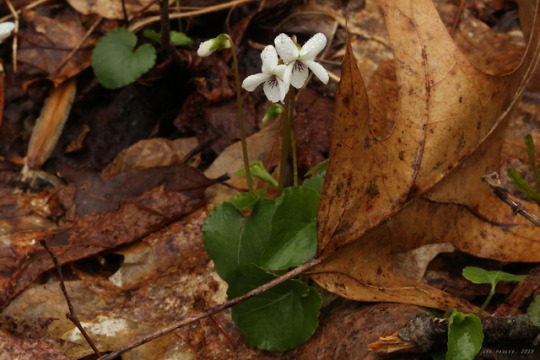




Above are a few spring treasures I discovered during a short hike on Glade Run Trail in Coopers Rock State Forest this morning. I was looking for trailing arbutus, but there’s plenty else to find this time of year. Wood anemone (Anemone quinquefolia) and Canada mayflower (Maianthemum canadense) were already poking up through the leaves. I also found sweet white violet (Viola blanda), halberd-leaved yellow violet (Viola hastata), and early meadow rue (Thalictrum dioicum).
#appalachia#vandalia#west virginia#glade run trail#coopers rock state forest#spring#hike#wildflowers#wood anemone#canada mayflower#sweet white violet#halberd-leaved yellow violet#early meadow rue
105 notes
·
View notes
Photo




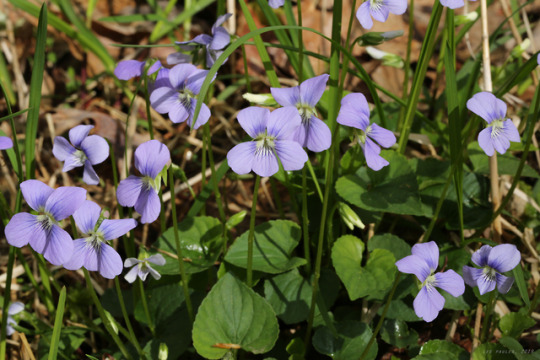
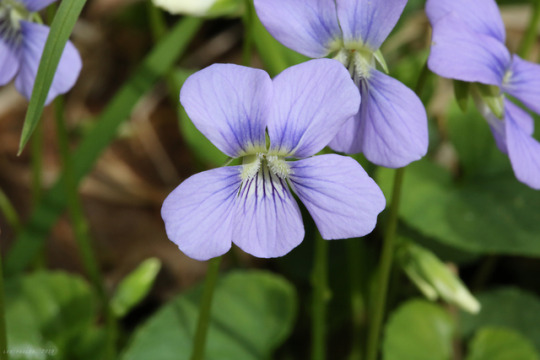




Appalachia is home to many beautiful spring violets (Viola), far too many to highlight in individual posts. So above is a hit parade of some of the usual suspects (photos from various locations in North-Central West Virginia): 1. downy yellow violet (Viola pubescens); 2 - 3. halberd-leaved yellow violet (Viola hastata); 4. sweet white violet (Viola blanda); 5 - 6. marsh blue violet (Viola cucullata); 7. long-spurred violet (Viola rostrata); 8. Canada violet (Viola canadensis); 9. common blue violet (Viola sororia); and Appalachian blue violet (Viola appalachiensis), which occurs only in the Appalachian Mountains of Pennsylvania, West Virginia, Maryland, and North Carolina.
#appalachia#vandalia#west virginia#spring#wildflowers#violet#viola#downy yellow violet#halberd-leaved yellow violet#sweet white violet#marsh blue violet#long-spurred violet#canada violet#common blue violet#appalachian blue violet
95 notes
·
View notes
Photo





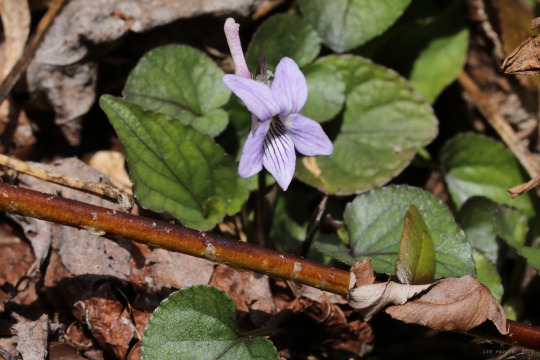

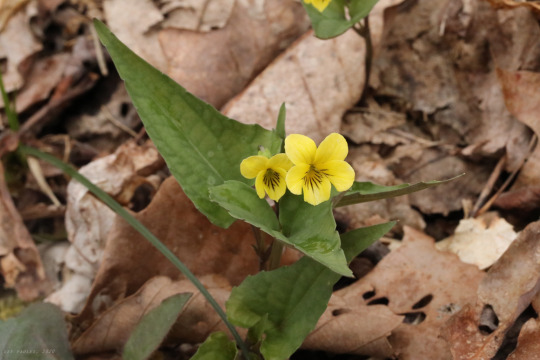

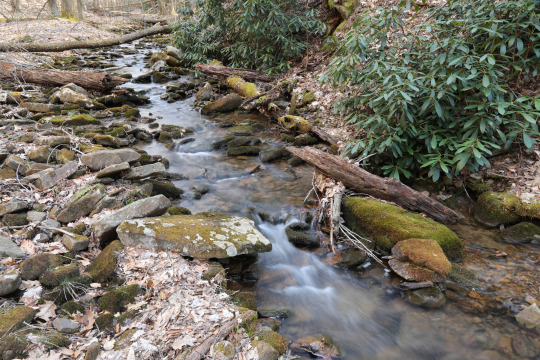
Above are a few more early spring mementos from my hikes around Coopers Rock State Forest this past weekend. I mostly followed the core loop trails: Clay Run, Advanced and Intermediate Ski, Headwaters, and Rhododendron. The wildflowers and early herbaceous foliage are as follows (top to bottom): trailing arbutus (Epigaea repens); downy rattlesnake plantain (Goodyera pubescens); long-spurred violet (Viola rostrata); early yellow violet (Viola rotundifolia); halberd-leaved yellow violet (Viola hastata); and three-leaved rattlesnake-root (Nabalus trifoliolatus), a.k.a., gall-of-the-earth.
#appalachia#vandalia#west virginia#spring#wildflowers#flora#coopers rock state forest#trailing arbutus#long-spurred violet#early yellow violet#downy rattlesnake plantain#halberd-leaved violet#three-leaved rattlesnake-root#gall-of-the-earth
36 notes
·
View notes
Photo




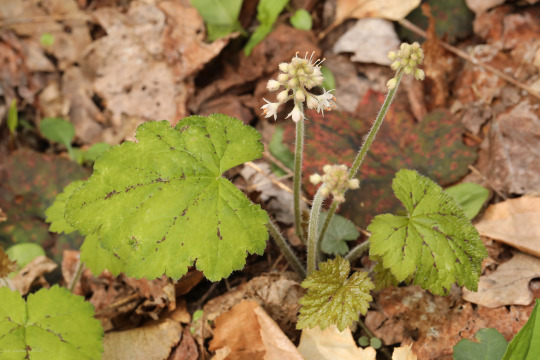





At about 1200 feet above the Monongahela River, spring is finally catching up on Chestnut Ridge. Temperatures today climbed into the mid-fifties after an extended cold spell, and the streams in Coopers Rock State Forest were running full after recent rains. In another week, the forest floor will be unrecognizable from the onslaught of spring ephemerals. A few of the wildflowers making an early push (top to bottom): wood anemone (Anemonoides quinquefolia), also known as nightcaps and windflower; broadleaf toothwort ( Cardamine diphylla), also known as crinkle root and pepper root; heartleaf foamflower (Tiarella cordifolia); twoleaf miterwort (Mitella diphylla), also known as bishop’s cap; halberd-leaved yellow violet (Viola hastata); and long-spurred violet (Viola rostrata).
#appalachia#vandalia#west virginia#spring#flora#wildflowers#hike#chestnut ridge#coopers rock state forest#anemonoides#wood anemone#nightcaps#windflower#cardamine#broadleaf toothwort#crinkle root#crinkle-root#pepper root#tiarella#heartleaf foamflower#mitella#twoleaf miterwort#bishop's cap#viola#halberd-leaved yellow violet#long-spurred violet
61 notes
·
View notes
Photo


Halberd-leaved yellow violet (Viola hastata) is one of the more dramatic violets in Appalachia’s spring woods. Its heart-shaped leaves appear to have been pulled through a taffy machine into pointy, elongated tips. The leaf pattern vaguely resembles the working end of a Swiss halberd, thus the plant’s common name. Viola hastata thrives in the dry oak-hickory woods of the Appalachian Mountains. The photos above were taken in Coopers Rock State Forest.
#appalachia#vandalia#west virginia#flora#spring#wildflowers#viola#halberd-leaved violet#silverleaf violet#spearleaf violet#coopers rock state forest
26 notes
·
View notes